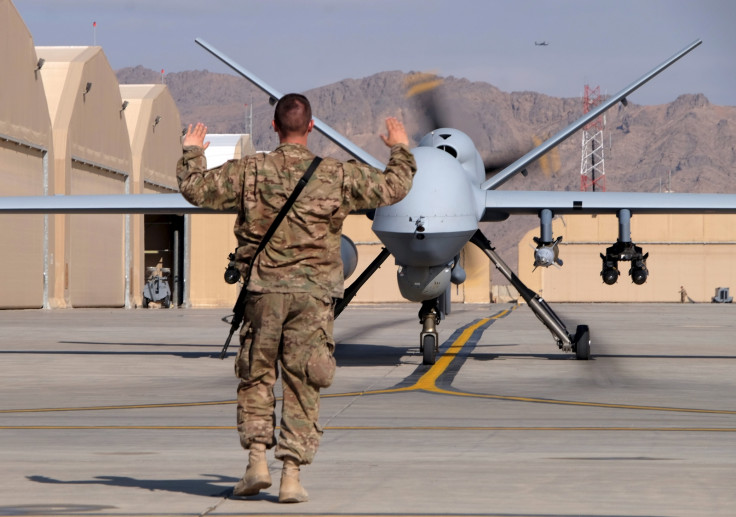Pentagon building AI neural networks to hunt down Islamic State militants
The US wants machine learning to help comb through thousands of hours of drone surveillance footage.

The Pentagon is working with artificial intelligence to harness computers to autonomously hunt for Isis militants in Iraq and Syria.
The US Department of Defense (DoD) is developing neural networks to analyse thousands of hours' worth of aerial surveillance video footage from military drones. At the moment, 95% of all military drone video footage is shot by aircraft flying over Iraq and Syria as part of the campaign against the Islamic State.
Neural networks are large networks of artificially intelligent classical computers that are trained using computer algorithms to solve complex problems in a similar way to the human central nervous system, whereby different layers examine different parts of the problem and combine to produce an answer.
In the last two years, computer scientists have demonstrated that neural networks can process images to produce surprising results, such as psychedelic paintings and amazing selfie filters, or use the images to learn to recognise and detect patterns, such as recognising blurred faces from photographs, or predicting social unrest several days in advance. However, it is still difficult to teach computers to think like a human, and research continues.
Humans can't keep up with the amount of drone footage
The military already has thousands of internal and external civilian intelligence analysts that work in three-man teams to scan the drone video footage for abnormal activities, but they are overwhelmed and desperately need help from machines.
"There are a thousand things we want to do with artificial intelligence, machine learning, deep learning, computer vision, but everybody has cautioned us, don't take on too much the first time you do this," the Pentagon's director for defense intelligence for warfighter support Air Force Lt Gen John N T "Jack" Shanahan told Defense One.
"You have to go after a manageable problem, solve it, show early wins and then start to open Pandora's box and go after all of these other challenges across the department."
About 60% of the footage gathered over the battlefield in these countries is benign, but there is also a possibility that some terrorist activity is being masked by clouds during bad weather conditions, so the military wants machine learning that can process the videos to see what else might be going on.
Congress still needs to approve funding
Shanahan is the head of the Algorithmic Warfare Cross Functional Team – a new team set up by the Pentagon to integrate big data and machine learning across the armed forces. So far, there have been efforts to implement computer algorithms, but now the DoD wants a unified approach deployed by the end of this year.
Since 2015, the Pentagon has been working on another similar project that aims to use AI to track and locate mobile missile launchers, like the ones that are used by North Korea. However, the computers need to analyse satellite imagery, which is much less data than military drone footage.
Before the new unit can get off the ground however, the DoD needs Congress to approve $70m (£54.2m) in funds, so that it can invest in the equipment and computer scientists needed to develop the neural networks.
© Copyright IBTimes 2025. All rights reserved.






















